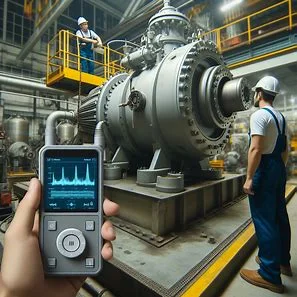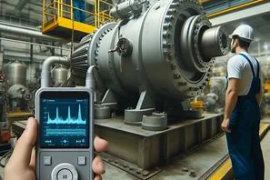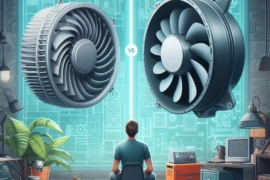Importance of Centrifugal Fans in a HVAC system
In a HVAC system, centrifugal fans, often known as blowers, play a pivotal role. This mechanical equipment is tasked with the essential job of moving air from one place to another and ensure comfort and air quality in various indoors of commercial and Industrial buildings. Centrifugal fans are key players in temperature management, making them crucial components in both heating and cooling processes.
By and large, the centrifugal fans are kept inside the Air Handling Unit (AHU) cabin. It is practically not possible to access the fan and assess the condition of the fan while it is in operation, and it is a difficult task for any maintenance engineer to grab the symptom of the fan while in operation. Hence there is a need to adopt a technology wherein we can predict the condition of the fan well in advance.
It is of utmost importance to keep a high availability of these equipment. Machine / Equipment failures often occur due to continuous operation and various cyclic loading situations. This process leads to gradual wear of components, which increases the risk of failure. According to the IEEE (Industrial Engineering and Engineering Management) literature, maintenance costs account for between 15% and 60% of the manufacturing cost of the final product, and in heavy industry, these costs can be as high as 50% of the total production cost. The said data varies between industry to Industry and the type of maintenance techniques being used. These costs can be avoided by choosing an efficient maintenance strategy, which allows for detecting and correcting the problem in time. The main objective of the maintenance techniques strategy is to increase the availability of machines with lower maintenance costs.
Maintenance techniques can be basically divided into three types
- Breakdown maintenance,
- Preventive maintenance,
- Calendar based Maintenance.
- Performance Based Maintenance.
- Predictive maintenance (PdM).
Among the techniques used for equipment maintenance, PdM has proven to be the most efficient and effective in the industrial environment. PdM is based on the analysis of data collected through monitoring or inspections. The data are collected from machines to determine the health status and define the maintenance strategy.
Failures can be detected by a variety of diagnostic methods. Among the various techniques used in predictive maintenance, vibration analysis has emerged as a valuable tool. Following figure explains the evolution of maintenance practices.
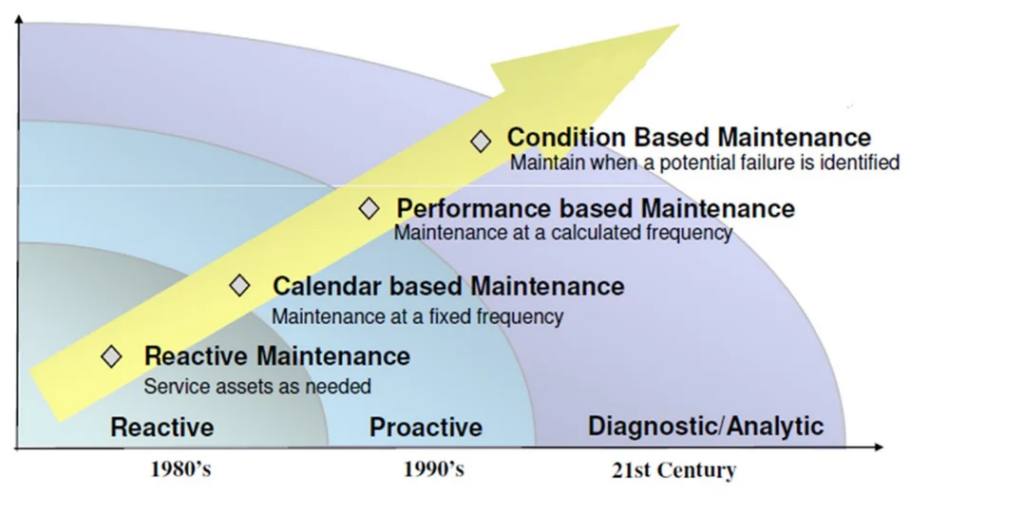
What Causes Vibration in a Centrifugal Fan?
- Unbalance in the rotating part
- Misalignment of couplings and bearings
- Bent shaft
- Worn, eccentric or damaged gears
- Bad drive belts and drive chains
- Inaccuracies in bearings
- Electromagnetic forces
- Aerodynamic forces
- Hydraulic forces
- Looseness
- Rubbing
- Resonance
This technique has emerged as a powerful and well-established PdM technique for rotating equipment. it is a noninvasive and nondestructive method.
How a Vibration analysis technique helps in reducing the Life-Cycle cost of a centrifugal fan and improves the longevity of the fan is well explained in the tabular column below
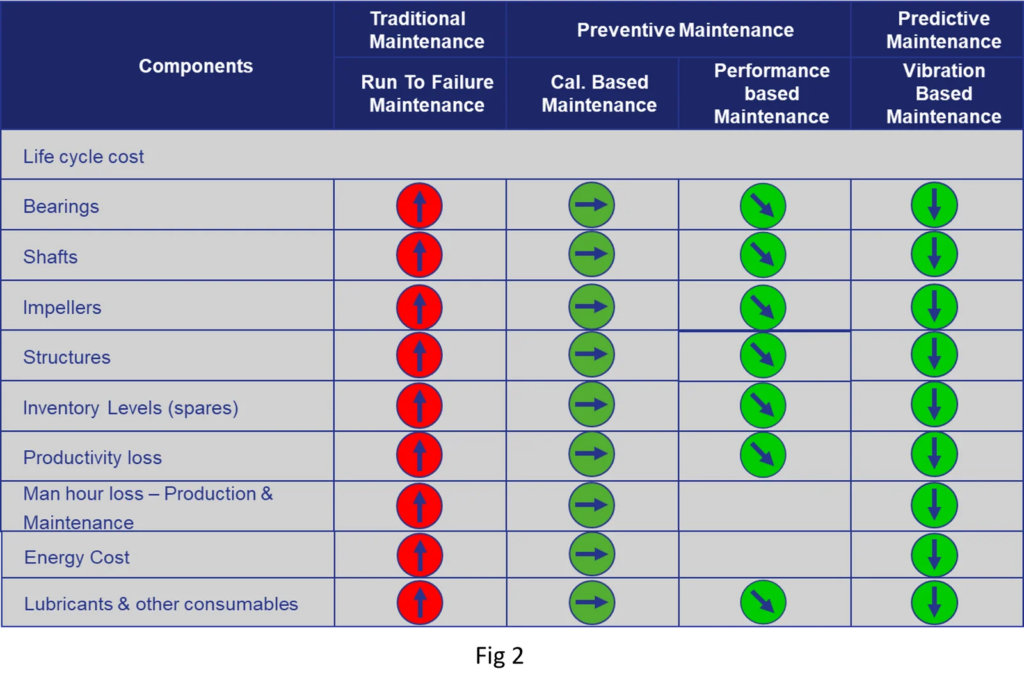
Vibration Analysis Can be carried out by “Offline” and “Online” Methods.
What is Offline Vibration Analysis?
Vibration monitoring devices measure the amplitude, frequency, or intensity of the vibrations emitted by any rotating piece of machinery, including motors, fans, pumps, and more.
Every piece of rotating equipment has its own vibration signature. A machine’s baseline, healthy vibration patterns can be determined by taking a reading of the equipment when it is in optimal running condition.
Once the normal baseline is determined, maintenance teams can use either handheld vibration meters or vibration monitoring sensors affixed to key points on the machine to measure the machine’s vibrations over time. If the vibration pattern changes, it’s probably because there is a fault in the machine. Vibration monitoring can pick up on even minor defects in your machinery, giving your maintenance teams plenty of time to make repairs before the problem worsens.

The process of Offline Vibration Analysis is simply explained in the following flow chart.
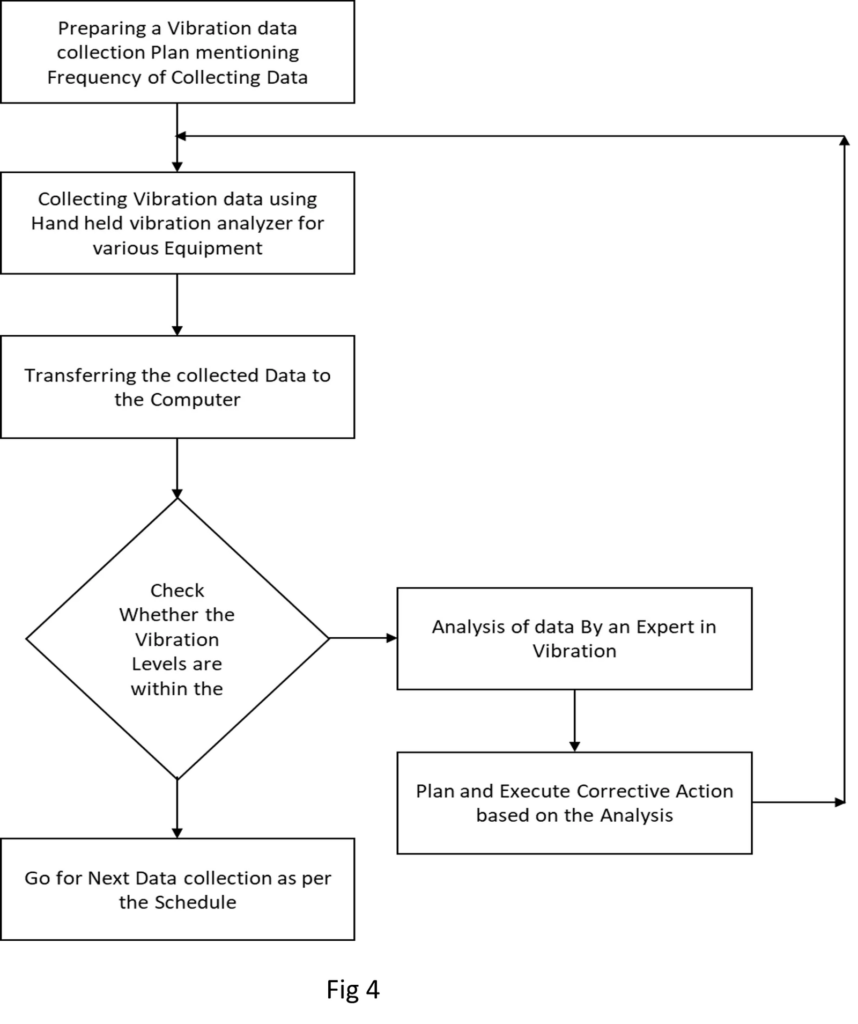
It can be inferred from the flow chart that the data collection happens manually with the help of a hand-held vibration analyzer. To analyze the data and to arrive at a solution and to implement the solution for the inaccuracies observed, we need the support of an expert.
What is Online Vibration Analysis?
Online Vibration monitoring is an effective condition monitoring tool where the sensors are mounted on the bearing points of the asset permanently and are configured to collect vibration data on a real-time basis. It can be programmed to provide alerts or alarms to users in case of any abnormal change of the preset threshold values. To arrive at a solution based on the alerts, we need the support of a specialist in the field of Vibration analysis. Unlike offline monitoring system, in Online monitoring system, we can capture the changes instantly.
Online vibration monitoring primarily starts with critical assets, the expensive equipment that would contribute to substantial maintenance expenses, and production losses in the event of a bearing failure. Online continuous vibration monitoring will be the essential tool to eliminate sudden breakdowns as it alerts the maintenance personnel of any minor defects at the very early stage providing enough time to perform corrective measures to eliminate the breakdown. In industries, asset-wide online condition monitoring not only improves machine uptime, high productivity, efficiency, reliability, and it also reduces life cycle costs.
Where to Choose What?
In of rotating equipment like Air Handling Units in which the rotating equipment that is fan is mounted inside an enclosure (Refer the below figure), the access to the equipment itself is a challenge, while the fan is running at it’s optimal speed.
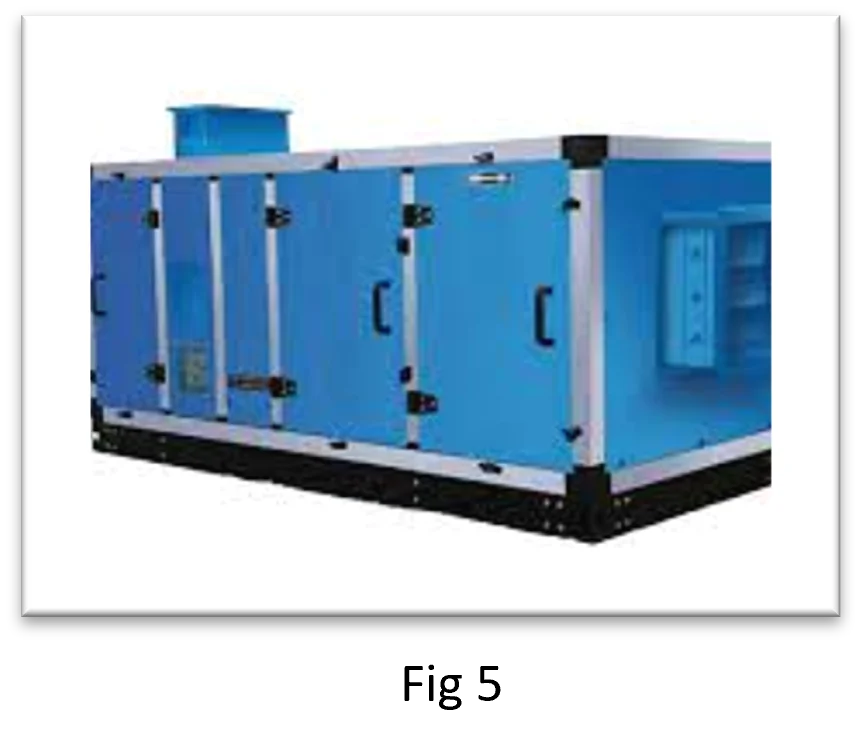
Hence grasping a symptom well in advance is a challenge.
This can be addressed in the following method
- Adopting certain changes in the Offline vibration monitoring system
- Mounting a permanent probe on the bearing
- Connect a cable to the probe and bringing the other end of the cable outside the enclosure.
- This system comes with a limitation. As the length of the cable increases, the loss in signal too increases. Hence a site study becomes mandatory before adopting.
- Wired or a wireless online vibration motoring system.
- Although a failsafe system, it comes with a high capital cost.
Hence a “One Size Fits All” solution cannot be arrived at. At one end with Offline system, it has limitation in accessing the bearing points while running and at the other end, with online system, it comes with a high capital cost.
To answer “Where to choose What”, we need a thorough audit of the available equipment and evaluate the technical feasibility of Offline system. If the offline is completely ruled out, we need to go for an optimal method of Online system. The key to the success of vibration analysis system depends on critical evaluation of the equipment before investing.

